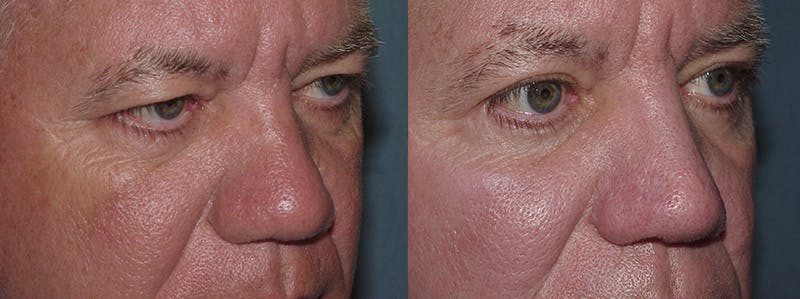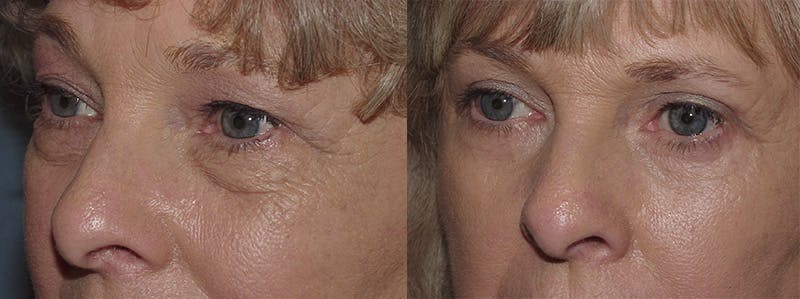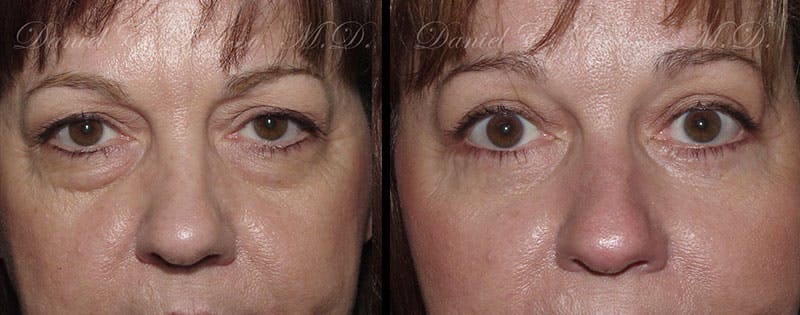As facial aging increases over time, the upper eyelid skin loses elasticity and begins to sag. Sagging worsens over time, making the upper eyelids appear droopy, and excess skin may appear to rest on the upper lashes. Additionally, fatty pads that normally cushion the eye may begin to bulge or herniate beneath the lower eyelids, resulting in a puffy appearance.
What issues does blepharoplasty correct?
Blepharoplasty can correct sagging eyelids and puffiness caused by excess skin and displaced fat. It also corrects eyelid hooding that may block your visual field. Blepharoplasty cannot correct dark circles, lift sagging brows, or directly address fine lines or wrinkles around the eyes—however, the removal of excess skin often reduces the number of wrinkles around the eyes.
What procedures can be combined with blepharoplasty?
Blepharoplasty may be performed with facial procedures such as a brow lift, facelift, rhinoplasty, cheek and/or chin augmentation, laser skin resurfacing and lip enhancement to achieve your desired results.
Will insurance cover my blepharoplasty?
Cosmetic blepharoplasty is not covered by insurance, but functional blepharoplasty may be. If your vision is severely affected due to a redundancy of skin, functional blepharoplasty may be covered by insurance.
Will I have any scars after blepharoplasty?
The incisions for blepharoplasty are small and inconspicuous. Any potential scarring is hidden below the lower lashes, inside the eyelids, or within the natural upper eyelid creases. Once the eyelids have healed, no noticeable scarring is expected.
How long do the results of blepharoplasty last?
The results of eyelid surgery tend to be long-lasting, especially when patients use eye protection and skincare. Because the tissues will continue to age, a regular skin care routine is recommended to keep the skin healthy and to slow the rate of aging.




















